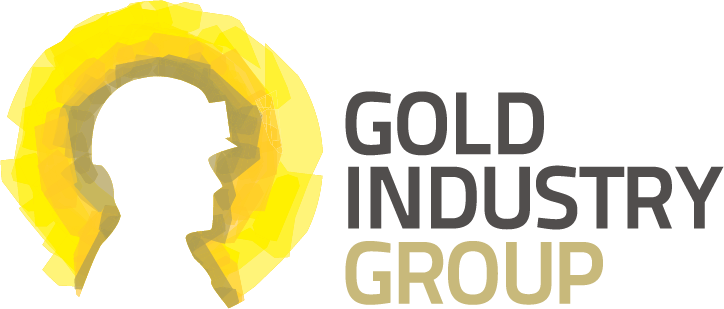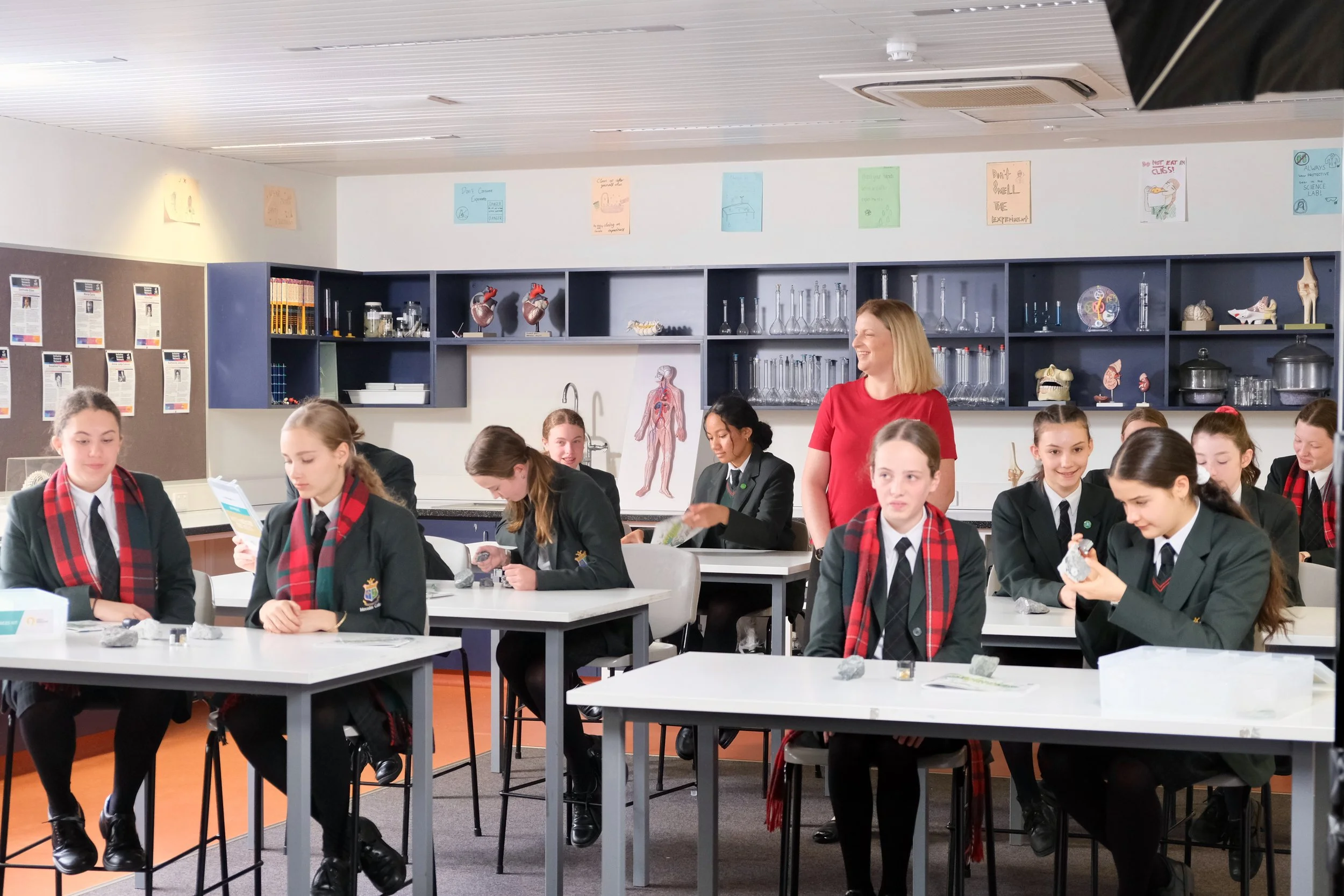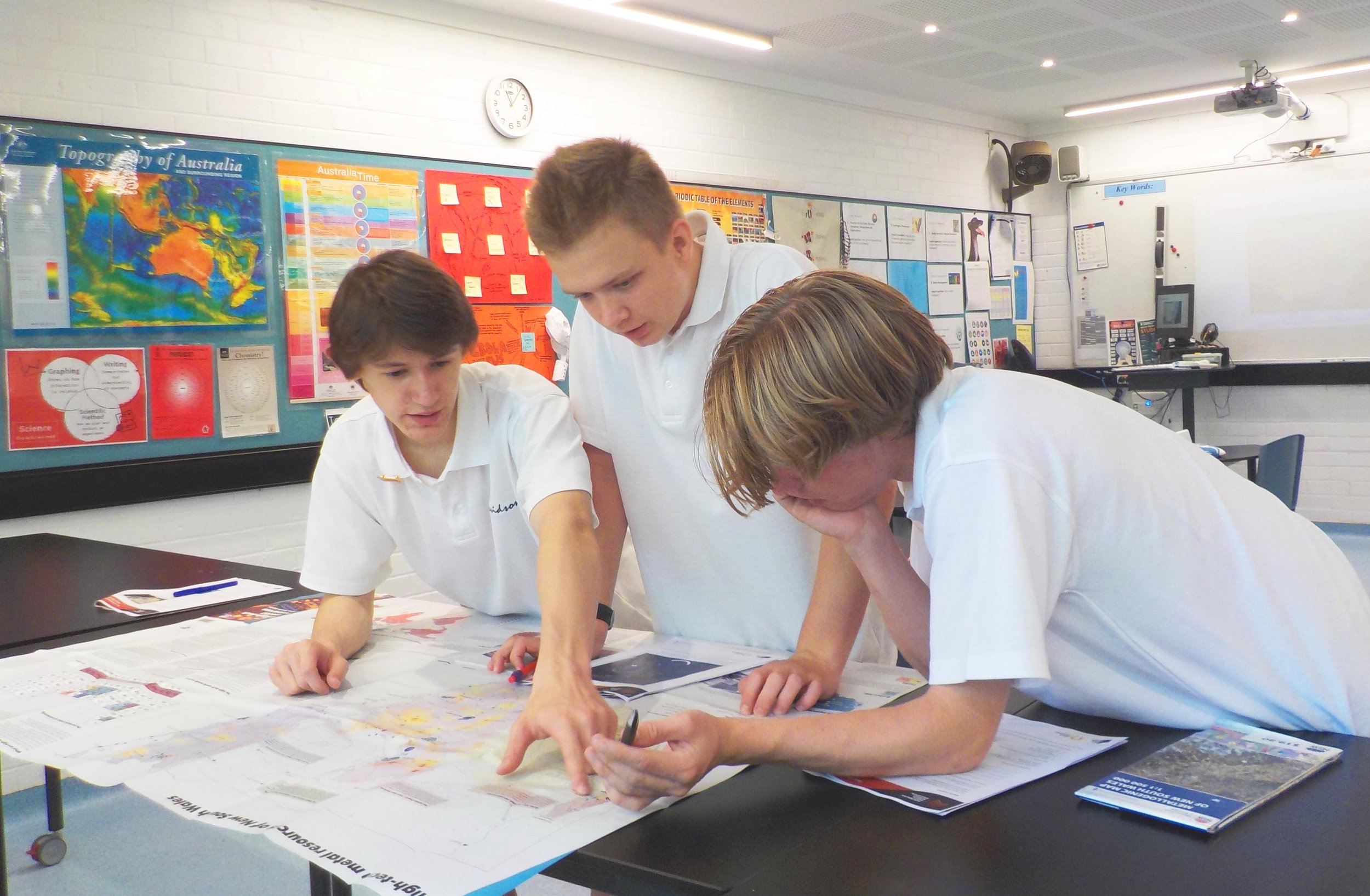The Gold Industry Group is celebrating two years since bringing Earth and Environmental Science (EES) education to NSW in partnership with Australian Earth Science Education (AusEarthEd), delivering valuable support to thousands of teachers and secondary school students via free incursions, training, and resources.
Students from Davidson High School explore high-tech minerals maps of NSW
In the past 12 months, the Program has engaged over 1,100 students, significantly improving their perception of the mining industry and its importance to themselves and Australia, with 50% of students increasing their interest in exploring a career in gold.
Students from St Josephs examining various types of rock specimens
The Program also plays a critical role in providing up-to-date training and mentoring for educators, with 52 new teaching and learning resources developed in the past year, and 93% of educators reporting increased confidence in teaching EES to students.
As reported in Australian Mining, providing up-to-date and relevant information on earth science is critical in a country with major growth in the mining and resources sector, and our partnership is providing a fantastic opportunity to share the gold industry’s current earth and environmental science developments and inspire the next generation of industry leaders.
Four lucky PLC Sydney students attended Sydney’s Gold Conference in June
Since its launch, AusEarthEd has provided a host of new earth science materials tailored to the Australian Curriculum, including classroom activities, case studies, videos, and articles as well as student incursions and teacher training.
AusEarthEd lead educator for senior secondary engagement Susan Filan Being said being able to produce and disseminate accurate information about the mining industry through examples from best practice was an integral part of the Program’s success.
PLC students examining gold specimens
“Students are given the newest information on innovations and discoveries in mining and more broadly, the whole earth and environment sciences sector,” she said.
“We strive to provide information that is going to resonate with the students. And by providing this content to teachers we’re allowing them to teach the curriculum without having to stay on top of all the recent developments in the earth sciences field.”
In the classroom, students study rock specimens from the Gold Industry Group’s Gold Resources Kits, learn the importance of mining to Australia’s economy and our top exports, and explore different types of mines using virtual reality.
Students also use High-tech Metals and Metallurgical maps from the Geological Survey of NSW to propose gold mines to explore based on Australian reserves in NSW, using information they gather from the maps.
Through our partnership, AusEarthEd has also been able to highlight initiatives occurring at gold mines and provide students opportunities to participate in excursions that connect their earth science education and future career prospects.
This included a trip to Sydney’s Gold Conference in June, where lucky PLC Sydney students had the incredible opportunity to connect directly with industry workers.
The students gained first-hand experience in how mines operate collaboratively and prioritise safety, sustainability, and social impact, with help from students at the UNSW Minerals and Energy Resources Engineering.
The Perth Mint also sparked the curiosity of the students with their 1kg gold bar and Manager of Business Development and Industry Research Cameron Alexander said he really enjoyed engaging with the students and sharing insight into the industry’s diverse career options.
“The future of the gold industry looks sound with these great young minds entering the employment market in a few years,” he said.
All the students came away thinking about how they could fit into the dynamic gold industry after learning about the various roles including exploration, environment, community, extraction, processing, finance, refining, and bullion trading.
Filan said being able to show students and teachers the industry beyond what they study in the classroom was invaluable.
“We are excited to engage with the interests of the students and expose them to the professional world of the gold industry. The conference was valuable not only for formal education but also in promoting interest in the application of their knowledge,” she said.
“We get as close as we can to providing students with an authentic experience of working in these fields, and when we can’t physically provide an example, we turn to digital experiences.
“Using simulation activities, virtual reality accessories and reports of real landscapes across Australia, we can deliver something that is real and impactful to the students and allow them to undertake activities that accurately mirrors work in these fields.”
NSW educators and students can learn more about AusEarthEd on their website, blog, YouTube channel, or by following the Facebook, Twitter and Instagram pages.



